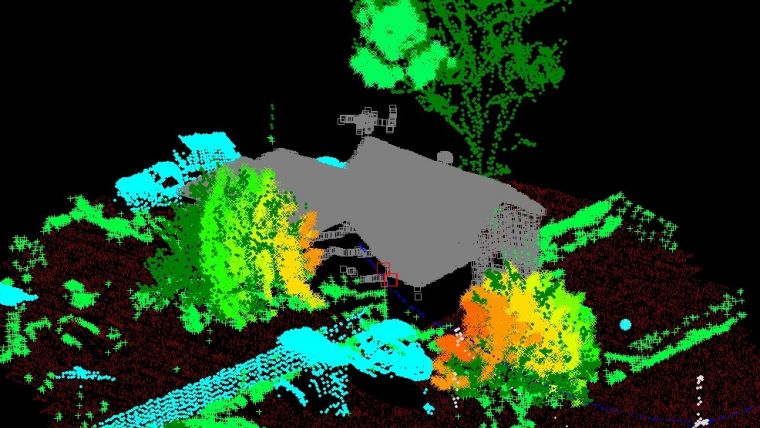The Pitfalls of Working with Lidar
The arrival of unmanned aerial vehicles (UAVs or ‘drones’) has democratized the Lidar market forever. Everyday projects can be flown easier and faster, and sensors are getting lighter, more accurate and flexible, enabling their use in multiple platforms or combined with other techniques to obtain everything in a single survey. In terms of data processing, new Lidar tools and algorithms are continuously being developed, performing tasks and processing better and faster than ever. In recent years, the market has evolved from just a few big specialized companies to hundreds of new players bringing new approaches, fresh perspectives and innovative solutions.
These new companies come with all the ingredients necessary to succeed: background, knowledge, new techniques, out-of-the-box thinking. It is fairly easy to beat ‘old-fashioned’ companies in the first round of pitching… but what happens when the slick marketing has worked and the project is awarded to you as a newcomer? Will you really be better than a more established player?
All market changes create new situations, most of them positive. From our perspective as an expert company providing Lidar processing services to survey companies worldwide, the key is to turn the data you can obtain into value. We are constantly surprised by how many companies approach every single step with great care and professionalism, until it comes to transforming raw data into value. Then, they seem to assume that all automated solutions are equally good and go for the cheapest option possible. Are they aware of the risk they are taking?
There is absolutely no point in having a top-of-the-range drone equipped with the most expensive sensor and able to fly beyond the visual line of sight for hundreds of kilometres per day if you lack the expertise to process and evaluate your data, or if your point cloud is inaccurate, fails to detect critical risk or contains too much noise… You will probably never see that client again, because most clients care about high-quality data is, even if you don’t.
People sometimes seem to forget that geospatial products, including those related to Lidar technology, are the result of huge investments in innovation, programming, artificial intelligence (AI) and suchlike… So why must prices come down year after year? When quoting for a project, it should not just be a matter of counting the hours involved. You should also factor in the value you bring to it thanks to your research, experience, risks taken, investment. In other words, don’t forget to add knowledge to the bill. Quote the project for what it is: a cutting-edge technology able to perform the work just as accurately as if you were in the field.
Another issue is the definition and use of the term ‘automation’. We are all still waiting for an automated tool that can process 5,000km of power lines at the touch of a button, classify Lidar data and get vegetation encroachments, for instance, so that we can save all the money we currently spend on data analysis. However, the fact of the matter is that engineering and top-level survey projects always require experts to bring added value to the raw data obtained. Yes, AI can help to speed up time-consuming tasks but, for now, engineers are still required to make sure the results are reliable. And this is not a bad thing, because doing things well is one of the few weapons you can still use against those companies who promise more than they can actually deliver with their ‘fully automated’ solutions.
To process data cost-effectively, it is therefore important to understand the difference between fully automated and ‘reliable automation’ of time-consuming steps. The key today is to combine knowledge with AI, algorithms and tools. This enables your decision-makers and your best experts to focus on the main areas and added-value steps and products, while machine learning, algorithms and supercomputing take care of the heavy-duty and repetitive tasks.
In conclusion, in today’s image-conscious and marketing-driven world, it is important to remember that companies should aim to impress their clients – engineers, utilities, construction companies – not only in terms of how they conduct the actual project (e.g. by using the best drone, sensor, etc.), but also the results they deliver. That means being able to process and transform big data into cutting-edge, customized, truly useful solutions that allow clients to continue to work ‘in the old way’, but faster, better and (if possible, but only if it doesn’t undermine your efforts) cheaper! And if you lack the necessary expertise to do so, enlist help from a company that can provide the services you need.
Rafa Torró is a GIS analyst at Dielmo 3D, where he is responsible for international business development. His specializations are remote sensing, in particular Lidar. He holds a bachelor’s degree in geography and a master’s degree in both geographic education as well as GIS and remote sensing technologies.

Value staying current with geomatics?
Stay on the map with our expertly curated newsletters.
We provide educational insights, industry updates, and inspiring stories to help you learn, grow, and reach your full potential in your field. Don't miss out - subscribe today and ensure you're always informed, educated, and inspired.
Choose your newsletter(s)
























